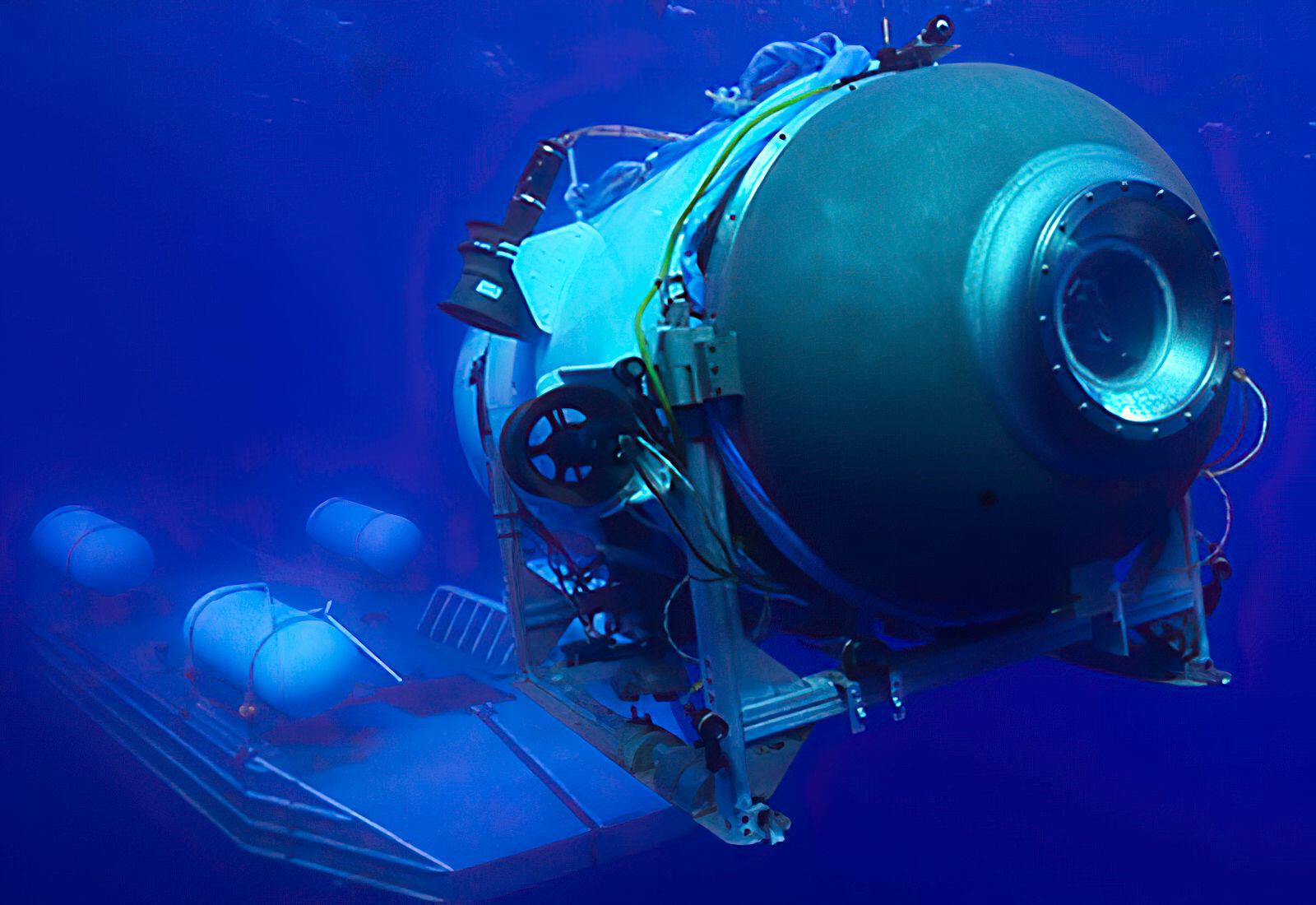The following essay is reprinted with permission from  The Conversation, an online publication covering the latest research.
The Conversation, an online publication covering the latest research.
An extensive search and rescue operation is underway to locate a commercial submersible that went missing during a dive to the Titanic shipwreck.
According to the US Coast Guard, contact with the submersible was lost about one hour and 45 minutes into the dive, with five people onboard. The vessel was reported overdue at 9.13pm local time on Sunday (12.13pm AEST, Monday).
The expedition was being run by US company OceanGate as part of an eight-day trip with guests paying US$250,000 per head to visit the wreck site. As of Monday afternoon (Tuesday morning in Australia), US Coast Guard Rear Admiral John Mauger said the watercraft likely had somewhere between 70 and the full 96 hours of oxygen available to the passengers.
The Titanic’s wreck sits some 3,800 metres deep in the Atlantic, about 700km south of St John’s, Newfoundland. Finding an underwater vehicle the size of a small bus in this vast and remote expanse of ocean will be no small feat. Here’s what the search and rescue teams are up against.
OceanGate’s Titan submersible goes missing
Submersibles are manned watercraft that move in a similar fashion to submarines, but within a much more limited range. They’re often used for research and exploration purposes, including to search for shipwrecks and to document underwater environments. Unlike submarines, they usually have a viewport to allow passengers look outside, and outside cameras that provide a broader view around the submersible.
The missing submersible in question is an OceanGate Titan watercraft, which can take five people to depths of up to 4,000m. The Titan is about 22 feet in length, with speeds of about 3 knots, or 5.5km per hour. Although submersibles are often connected to a surface vessel by a tether, video and photos suggest the Titan was likely operating independently of the surface ship.
According to OceanGate’s website, the Titan is used “for site survey and inspection, research and data collection, film and media production, and deep-sea testing of hardware and software”.
It also has a “real-time hull health monitoring (RTM) system”. This would likely include strain gauges to monitor the health of the Titan’s carbon fibre hull. A strain gauge is a kind of sensor that can measure applied force and small deformations in material resulting from changes in pressure, tension and weight.
The Titan’s carbon fibre hull connects two domes made of composite titanium – a material that can withstand deep-sea pressures. At 3,800m below sea level (the depth of the Titanic) you can expect pressures about 380 times greater than the atmospheric pressure we’re used to on the surface of the earth.

Communication and rescue efforts
The Titan would have had an acoustic link with its surface vessel, set up through a transponder (a device for receiving a sonar signal) on its end, and a transceiver (a device that can both transmit and receive communications) on the surface vessel.
This link allows for underwater acoustic positioning, as well as for short text messages to be sent back and forth to the surface vessel – but the amount of data that can be shared is limited and usually includes basic telemetry and status information.
The Titan is a battery-operated watercraft. Given it has lost all contact with its surface vessel, it may have suffered a power failure. Ideally, there would be an emergency backup power source (such as an independent battery) to maintain emergency and life support equipment – but it’s unclear if the missing vessel had any power backup on hand.
According to reports, at least two aircraft, a submarine and sonar buoys were being used to search for the vessel. The sonar buoys will be listening for underwater noise, including any emergency distress beacons that may have gone off.
One of the major challenges in the rescue effort will be contending with weather conditions, which will further shrink an already narrow search window.
What might have happened?
In a best case scenario, the Titan may have lost power and will have an inbuilt safety system that will help it return to the surface. For instance, it may be equipped with additional weights that can be dropped to instantly increase its buoyancy and bring it back to the surface.
Alternatively, the vessel may have lost power and ended up at the bottom of the ocean. This would be a more problematic outcome.
The worst case scenario is that it has suffered a catastrophic failure to its pressure housing. Although the Titan’s composite hull is built to withstand intense deep-sea pressures, any defect in its shape or build could compromise its integrity – in which case there’s a risk of implosion.
Another possibility is that there may have been a fire onboard, such as from an electrical short circuit. This could compromise the vehicle’s electronic systems which are used for navigation and control of the vessel. Fires are a disastrous event in enclosed underwater environments, and can potentially incapacitate the crew and passengers.
Time is of the essence. The search and rescue teams will need to find the vessel before its limited supplies of oxygen and water run out.
There’s an ongoing debate in scientific circles regarding the relative merit of manned submersibles, wherein each deployment incurs a safety risk – and the safety of the crew and passengers is paramount.
Currently, most underwater research and offshore industrial work is conducted using unmanned and robotic vehicles. A loss to one of these vehicles might compromise the work being done, but at least lives aren’t at stake. In light of these events, there will likely be intense discussion about the risks associated with using these systems to support deep-sea tourism.
This article was originally published on The Conversation. Read the original article.
